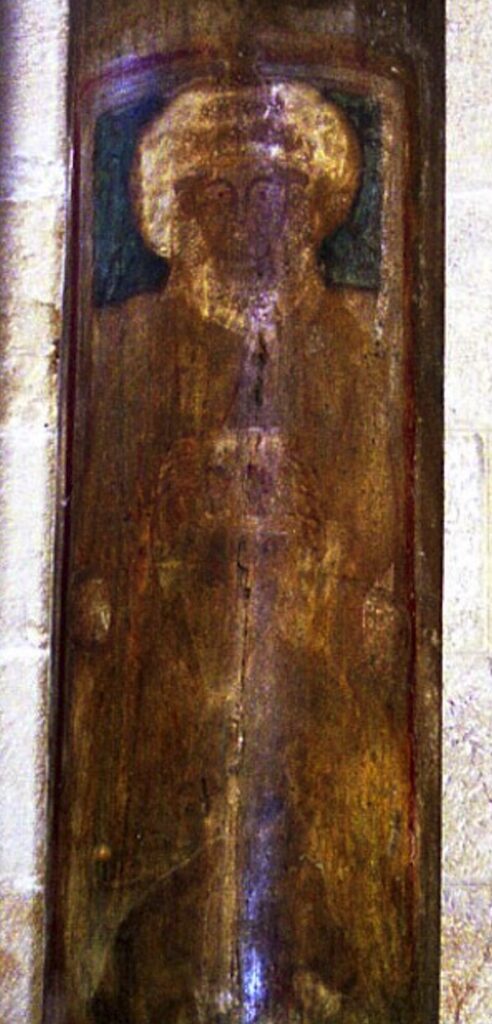A painting was found on the column located in the first inter-column, on the north side of the nave. The conservation is unfortunately not optimal, but the painting could be dated between 1145 and 1148, the years of the mosaic decoration of the presbytery, since it is in Byzantine style. Various scholars have dealt with the identification of the character depicted, who is seated, wearing a large cloak, a gem-bearing collar, wearing a three-crowned tiara and in the act of offering a two-headed tablet. It could be a woman, namely the Basilissa Irene, wife of Emperor John II Comnenus, depicted with a crown and jewels. In this case, the two male faces would represent the emperor and his son, Alexius. Other scholars shift the date to 1300 and identify the individual as Pope Urban V who, as a member of the Benedictine order, again moved the Holy See from Avignon to Rome. This plausible theory is supported by the fact that the iconography is similar to other representations of the Pope, including one in the San Domenico crypt in Spoleto. The head-dress would thus be identified with the three-crowned tiara, typical of the Benedictines, and the tablet with the two heads of St. Peter and St. Paul, found in the Lateran Basilica by Urban V himself.
A final, suggestive hypothesis identifies this mysterious bishop to be Saint Cataldo, bishop of Rachau and patron saint of Taranto. The figure of the Saint is also present in the Palatine Chapel and in the Monreale Cathedral.